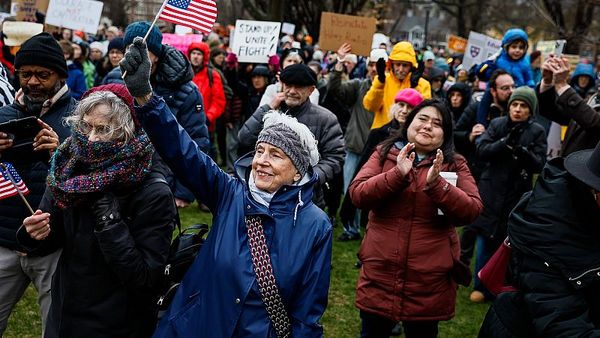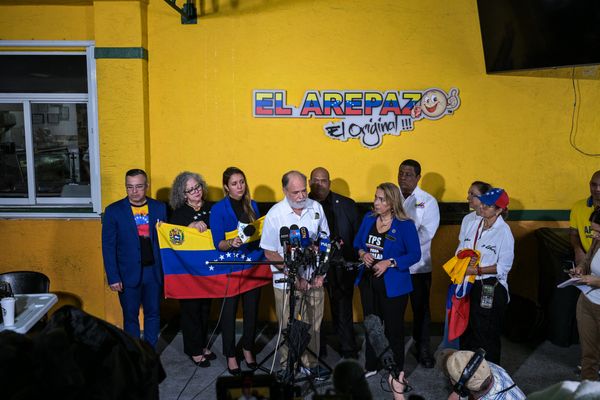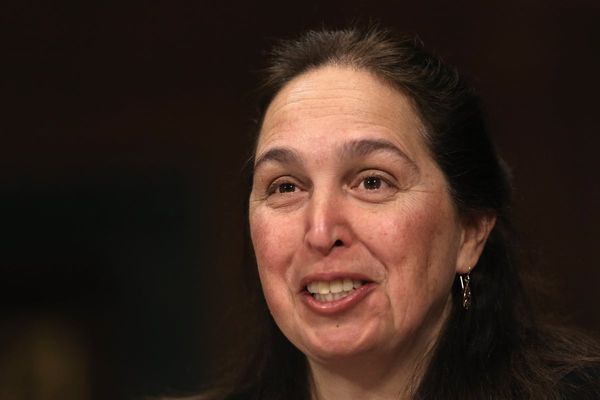
The United States acquired the island of Key West through neither military conquest nor diplomatic treaty. In good American fashion, it was purchased with private funds.
The island was uninhabited except by foliage and flamingos when John Whitehead spotted it while sailing from Nassau in 1819. It had little to recommend it—not even a source of fresh water—except a deep harbor, fortuitously placed between America's Eastern Seaboard and the busy gulf port of Mobile, Alabama.
Sensing the potential in that location, Whitehead and a business partner, John Simonton, tracked down the island's owner, a Spanish citizen named Juan Pablo Salas, and made him a $2,000 offer. "Salas accepted, no doubt believing he'd gotten the better part of the deal," writes Maureen Ogle in Key West: History of an Island of Dreams.
The island began to fill with settlers and just as soon acquired a reputation as a "deadly nest" of pirates and disease. "In another time and place, such a reputation may have killed the settlement," Ogle explains. "But in early-nineteenth-century America—alive with the pioneering spirit—that reputation only added to Key West's allure." As Simonton himself put it, "Capital and capitalists will always go where profit is to be found."
Wrecking, or salvaging the cargo of distressed sea vessels, was the town's chief industry. Wreckers provided an invaluable service, venturing out during violent storms at grave risk to themselves to prevent the loss of both life and goods when ships foundered on the hazardous coral reefs. "It was a vocation regulated by few laws," writes Victoria Shearer in It Happened in the Florida Keys, "but governed by firm rules of honor: The first wrecking vessel to arrive at a distressed ship became the wrecking master of record, directing the salvage and earning a larger share of the proceeds. Other wreckers received shares in proportion to the amount of tonnage they saved."
On shore, commission agents waited to receive the cargo and arranged to have it auctioned off—for a cut of the reward, of course.
The construction of public lighthouses (and the introduction of steam-powered ships, less likely to be blown aground) eventually put the wreckers out of business. Sea-sponge harvesting, cigar manufacturing, and tourism took over as engines of the local economy. The second of those was a product of government intervention: In the 1850s, Congress imposed stiff tariffs on Cuban cigars but failed to apply the duty to raw tobacco leaf. Predictably, entrepreneurs took to making bulk ingredient purchases in Havana and then set up factories in Key West, a mere 90 miles away. The workers were largely imported from Cuba as well.
During the 19th century, "a decidedly cosmopolitan city slowly emerged from the mangrove thickets," Ogle writes. "Because Key West sat at the crossroads of the Caribbean, everyone crossed paths with throngs of what one islander called 'world wanderers,'" from Bahamians to Irishmen to "Hindoos" to Swedes.
Key West naturally selected for a certain anti-authoritarian disposition. When state health officials responded to an 1896 smallpox outbreak by establishing a quarantine camp and closing the harbor, residents "balked," Ogle recounts. "At a town meeting, seven hundred people listened as one speaker after another denounced government interference. Key Westers paid taxes and got nothing but grief" from the state capital, they said. Eventually, "the crowd voted to inform the state legislature of their desire to secede."
It wouldn't be the last time.
***
By the early 20th century, Key West was gaining fame as a haven of vice. Saloons lined Duval Street. Gambling and prostitution were major attractions.
The situation intensified with the passage of the 18th Amendment, which banned the manufacture, sale, and transportation of alcohol. Suddenly, rumrunning became the biggest business of all. "Liquor washed over Key West during Prohibition like high tide under a full moon," Shearer writes. "Given its proximity to Cuba and the Bahamas, both of which were swimming in booze, the Florida Keys became a wide-open distribution point….Locals considered smuggling liquor a public service."
In Key West, even the Prohibition agents often left the islanders well enough alone—and for good reason. One story, recounted in both books, involves a 1926 speakeasy raid by a group of federal "revenooers" down from Miami. For whatever reason, this time the townspeople weren't having it. "Proprietors of the raided properties swore out warrants against the agents," Ogle writes, "charging them with assault and battery, destruction of private property, and larceny."
The justice of the peace for the Keys, Rogelio Gomez, "sided with the locals and granted the warrants," Shearer explains, making him "the only county magistrate in the United States ever to issue an arrest warrant against a Prohibition agent." The Miami agents, apparently seeing the writing on the wall, snuck out through the back door of the courthouse and escaped aboard a Navy ship. "The mess was finally cleaned up when the two sides—locals and feds—reached a compromise and dropped both cases," Shearer writes.
Around this time, Key Westers (also known as "Conchs") rejoiced when the U.S. Coast Guard relocated its headquarters away from the island. "And why shouldn't they have?" asks Ogle. "From the point of view of Key West rumrunners, the Coast Guard represented unfair competition. As soon as the Guard's servicemen seized a cargo of contraband booze, they turned right around and sold it….Who wouldn't be resentful?"
The onset of the Great Depression a few years later hit the island city hard. It's an exaggeration to say Ernest Hemingway's personal expenditures single-handedly kept the economy going, but only just. The celebrity writer ate and drank at the city's taverns; took out-of-town friends on deep-sea fishing expeditions; bought and renovated his now-famous residence on Whitehead Street; and lured in other literary types with disposable income, including the poet Robert Frost, the philosopher John Dewey, and the playwright Tennessee Williams.
But even Hemingway's largesse wasn't enough for the struggling town. In 1934, Julius Stone Jr., head of the Florida division at the Federal Emergency Relief Administration, arrived with an ambitious plan: to "turn Key West into a first-class tourist destination" by rehabilitating the historic downtown with a combination of federal dollars and local volunteer labor. Hoping to cultivate the arts scene, Stone also tasked a cadre of writers, painters, thespians, and musicians employed by the Works Progress Administration and the Federal Writers' Project with beautifying the island.
Perhaps the least libertarian aspect of Key West history, then, is that its fame as a hub of arts and culture was purchased in sizable part with tax money. But that story's epilogue is worth bearing in mind: After the New Deal programs dried up, locals created an arts league in an effort to maintain their new reputation. Stone himself, "back in town as a practicing attorney and mover-and-shaker, served as one of the organization's first presidents," Ogle writes. "Later, he would flee the island when one of his many shady deals turned sour."
Leading lights such as Hemingway and Frost, lamenting the touristification of the island, decamped. But those who remained bet on the allure of "bohemianism," producing glossy brochures that, in Ogle's words, "played up the island's live-and-let-live attitude and portrayed the community as a hotbed of eccentricity." Later, the same spirit would make Key West into a gay enclave famous for its drag shows.
There does seem to be something to the notion that Conchs are just different from other folks. In 1962, Americans held their collective breath as the country tottered on the edge of war. News broke that the Soviets had installed nuclear missiles in communist Cuba, putting attack capabilities in the United States' backyard. But despite being on the literal frontlines of that showdown, Shearer reports, "Life in Key West remained curiously, quintessentially laid back. After all, October in the Florida Keys, the height of hurricane season, had always been fraught with a degree of danger."
In the 1970s, the Keys emerged as a way station in the international drug trade. The same personal and geographic characteristics that had allowed Key West denizens to flourish during Prohibition (including a high tolerance for risk and hundreds of miles of marshy coastline) made it tough for federal law enforcement officials to keep up with traffickers half a century later—especially when local law enforcement officials were sometimes in on the game.
***
By 1982, the feds had come up with a new tactic for catching drug runners and illegal immigrants entering the country through the Keys. Their move sparked an uprising that, in a sense, continues to this day.
On April 18, without warning, the U.S. Border Patrol set up a checkpoint on U.S. Highway 1 at the top of the Keys—the only road out of town—and began searching all vehicles attempting to pass north onto the mainland. By some reports, the roadblock caused traffic to back up for 19 miles. Motorists, most of whom were vacationers headed home at the end of the weekend, sat for hours in the heat waiting for their chance to pass.
The tourism industry felt an immediate impact in the form of canceled reservations. Proprietors didn't take that lightly.
Mayor Dennis Wardlow and the island's Chamber of Commerce initially tried the legal route: They flew to Miami and filed for an injunction in federal court. It was to no avail. So the outraged Key Westers opted for a more dramatic response.
On April 23, Wardlow announced that Key West was seceding from the Union. "They're treating us like a foreign country," he said, "so we might as well become one." Assuming the title of prime minister, he lowered the stars and stripes and raised the light blue flag of the fledgling Conch Republic. "We serve notice on the government in Washington," he declared, "to remove the roadblock or get ready to put up a permanent border to a new foreign land. We as a people may have suffered in the past, but we have no intention of suffering in the future at the hands of fools and bureaucrats….We're Conchs and we've had enough."
Wardlow's cheeky intention was to declare war on America, fire one shot, surrender, and then ask for $1 billion in aid for rebuilding. His countrymen carried out the plan of attack as only Key Westers would. "Using the Conch Republic's weapon of choice—hard, stale Cuban bread," Shearer writes, a member of Wardlow's war cabinet "hit a cooperative young uniformed naval officer over the head, then immediately handed over the loaf."
The rebellion was part publicity stunt, part genuine protest. ("We're happy to secede today with some humor," Wardlow said. "But there's some anger, too.") It was effective on both counts: The roadblock was speedily removed, and the gag became a tourism bonanza.
Today, Conch Republic apparel is available at pretty much all of Key West's many, many T-shirt shops. A 10-day "independence" celebration happens every April, drawing thousands to the island. (The festivities include a mock battle in which combatants pelt naval vessels with water balloons and conch fritters.) Community leaders boast that Conchs are a people with a "sovereign state of mind." The micronation even sells novelty passports—and there are documented cases of holders successfully using them to travel abroad and reenter the United States. Sovereign, indeed!
In 1994, the Conchs sent an "official" delegation to the Summit of the Americas in Miami. In 1995, when a government shutdown in Washington caused the closure of Dry Tortugas National Park, just off the Florida coast, the Republic "threatened to use three antique biplanes loaded with stale Cuban bread to bomb the park's Fort Jefferson" unless the popular tourist destination was reopened, Shearer writes.
More recently, in 2006, the fake country "annexed" a stretch of an abandoned overseas bridge after the Coast Guard told a group of Cuban refugees that landing there did not trigger "wet foot, dry foot"—the policy at the time of granting legal status to any Cuban who landed on American soil.
Peter Anderson, who held the title of Conch Republic secretary general, "led a landing party of Conchs who staked miniature flags along the bridge," wrote Darien Cavanaugh in a 2015 article for the War Is Boring website. "Since the federal government decided in its infinite wisdom that the old Seven Mile Bridge is not territory of the United States, the Conch Republic is very interested," Anderson told reporters; Washington "chose not to defend" the bridge against the invasion.
And there you have the colorful history behind the Key West motto, emblazoned on everything from sweatshirts to souvenir passports: "We seceded where others failed."
The post Long Live the Conch Republic appeared first on Reason.com.







